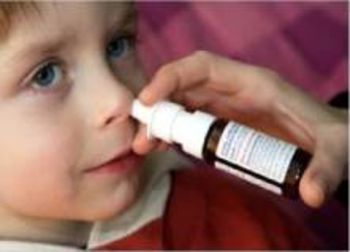Cyclic di-Nucleotides as adjuvants
Keywords
Cyclic di-Nucleotides,adjuvants,Mucosal,vaccination,antigen,eukaryotic,c-di-GMP,c-di-AMP
Challenge
Mucosal delivery of vaccines allows concerted combat of diseases caused by pathogens that either invade through, or cause disease at mucosal surfaces. A novel vaccination approach is to combine systemic response and local mucosal immune response in order to induce specific protection in distant mucosal sites. Easy application of vaccines as e.g. a nasal spray or nebuliser for inhalation increases patient acceptance and convenience of administration. In developing countries ease of use and low costs of these vaccines are important prerequisites for mass vaccinations. Moreover, injections are a potential risk for infections and disease transmission e.g. HIV, especially in developing countries. In addition many new mucosal vaccine candidates do not elicit sufficiently strong immune responses. The vaccination through mucosal membranes requires potent adjuvants in order to enhance the immunogenicity of the vaccine antigen, to decrease the rate of its degradation and to target the vaccine to the site of immune function. There are only very few adjuvants such as Alum that are approved for the use in humans. Thus the demand for new adjuvants is high and still unmet.
Technology
Cyclic di-nucleotides, such as c-di-GMP or c-di-AMP, are key regulators in the bacterial metabolism. In eukaryotic organisms these cyclic di-nucleotides serve as signalling molecules. The presence of this bacterial signalling cue seems to simulate an upcoming infection and therefore provokes a corresponding reaction of the immune system.
The cyclic di-nucleotides are particularly useful not only as systemic, but preferably as mucosal adjuvants. Co-administration of cyclic di-nucleotides evokes antigen-specific immune responses with a mixed Th1/Th2 and Th17 phenotype following intra nasal application.
Commercial Opportunity
The technology is offered for co-development or in-licensing.
Development Status
Proof of principle with a variety of disease relevant antigens obtained in vivo. First clinical trail phase I initiated in 2023.
Patent Situation
International application filed in November 2006 (WO2007054279). Granted patents in Europe (EP1959989B1), USA (US8,257,734B2), Canada, Australia, India and Hongkong.
Further Reading
- Ebensen et al. 2023: Pulmonary Application of Novel Antigen-Loaded Chitosan Nano-Particles Co-Administred with the Mucosal Adjuvant C-Di-AMP Resulted in Enhanced Immune Stimulation and Dose Sparing Capacity. Pharmaceutics 2023, Band 15, Issue 4. DOI: 10.3390/pharmaceutics15041238.
- Ebensen et al.: The Combination Vaccine Adjuvant System Alum/c-di-AMP Results in Quantitative and Qualitative Enhanced Immune Responses Post Immunization. Front Cell Infect Microbiol 2019, 9, 31.DOI: 10.3389/fcimb.2019.00031.




